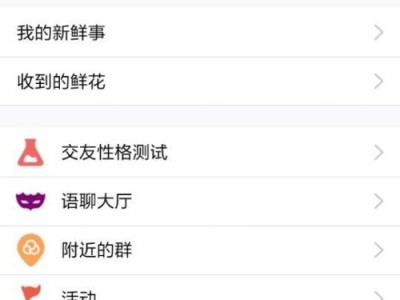前言
它正在加速向新兴领域的扩张
机器人是一种自动化机器,不同的是这种机器具有一些类似于人类或生物的智能能力,如感知能力、规划能力、运动能力和协调能力,是一种高度灵活的自动化机器。从应用来看,机器人可分为智能机器人和服务机器人。其中,智能机器人一般包括搬运机器人、码垛机器人、喷涂机器人和协作机器人。服务机器人可分为工业应用机器人和个人/家用机器人。其中,工业应用机器人包括智能客服、医疗机器人、物流机器人、领航迎宾机器人等;个人/家庭机器人包括个人虚拟助理、家庭作业机器人(如扫地机器人)、儿童教育机器人、养老机器人和情感陪伴机器人等。
随着人们对机器人智能性认识的不断深入,机器人技术开始渗透到人类活动的各个领域。结合这些领域的应用特点,人们开发了多种具有感知、决策、行动和交互能力的特种机器人和各种智能机器人。虽然对机器人没有严格准确的定义,但我们希望对机器人的本质有所把握:机器人是一种自动执行工作的机械装置。它可以接受人类命令,运行预先编程的程序,或者按照人工智能技术制定的原则和程序行事。它的使命是协助或替代人类工作。它是先进的综合控制论、机电一体化、计算机、材料和仿生学的产物,在工业、医药、农业、服务业、建筑业甚至军事领域都有重要用途。
一、机器人产业市场规模
2021年我国机器人市场规模约7.50.亿元。近几年保持了较好的增长速度,但整体增长速度正在逐渐放缓。其中工业机器人市场占比最高,达到66%,服务机器人达到25%,特种机器人占比约9%。
来源:《中国机器人产业发展现状分析及投资前景预测报告(2022-2029)》
1、工业机器人
工业机器人是用于工业领域的多关节机械手或多自由度机械装置。它可以通过自身的动力和控制能力自动执行工作并实现各种功能。它可以由人指挥,也可以按照预先安排的程序运行。现代工业机器人也可以按照人工智能技术制定的原理和程序来行动。
工业机器人可按操作极坐标、功能、机械结构、驱动方式、程序输入方式等维度分类:
(1)按操作的极坐标主要分为笛卡尔坐标机器人、圆柱坐标机器人(SCARA机器人)、球坐标机器人和关节型机器人。笛卡尔坐标机器人可以沿三个笛卡尔坐标运动,圆柱坐标机器人 可以进行升降、转动和伸缩运动。球坐标机器人可以转动、俯仰和伸展。多关节机器人有多个旋转关节。
(2)按功能主要分为焊接机器人、搬运机器人、装配机器人、加工机器人和喷涂机器人。焊接可分为点焊和弧焊。搬运机器人包括移动小车(AGV )、码垛机器人、机器人等,组装功能可完成包装和拆卸,加工功能可分为切割、打磨、抛光等。
(3)根据机械结构,可以是串联机器人,也可以是并联机器人。串联机器人一个轴的运动会改变另一个轴的坐标原点,比如六轴关节机器人;并联机器人一个轴的运动不会影响另一个轴的坐标原点,如蜘蛛机器人。
(4)按程序输入信号方式可分为示教输入型和编程输入型。
(5)按驱动方式可分为液压驱动、气动驱动和电动驱动。
来源:《中国机器人产业发展现状分析及投资前景预测报告(2022-2029)》
目前在工业机器人本体市场,欧洲和日本是工业机器人本体的主要供应商,以“四大家族”为代表的国外品牌在精度、承载性等技术指标方面处于领先水平容量。
中国市场也被以“四大家族”为代表的外资企业占领。中国本土品牌技术薄弱,仍无法与之抗衡。但国内实体价格相对便宜,很多中小厂商都在进行自动化改造。市场上更看重性价比的水平,所以国产本体还是有一定的市场份额的。
得益于2015年中国政府提出的“中国制造2025”战略,工业机器人也成为十大重点发展领域之一。 2015年以来我国工业机器人产量增长较快。虽然国产机器人发展时间较短,但行业仍处于起步阶段,厂商整体规模较小,与国外品牌相比存在一定差距但一方面,中国本土企业在核心技术研发上不断取得突破,开始部分替代国外品牌产品。另一方面,通过并购,掌握了更多的先进技术,核心竞争力大幅提升。目前,中国国产工业机器人的运动精度普遍可达到0.1 mm,其承载能力、稳定性、可靠性均优于人力。它们可以逐步完成高强度精细工艺,并能保证产品质量的稳定性。 ,如使用机器人抛光,成品率可从87%提高到93%。中国国产工业机器人销量增速快于国外品牌,市场份额将逐步提升。
国内本体公司销售额排在前梯队的有埃夫特、埃斯顿、中维星、广州启帆、新世达、新松机器人、立群自动化、环研等,这些公司处于机器人行业的中上游产业链扩张,通过自主研发或收购等方式掌握零部件和车身的研发技术,不断扩大产能,同时产能利用率不断提升。目前国内主要品牌产能如下:埃夫特10000台/年,埃斯顿9000台/年,新世达10000台/年,新松机器人5000台/年。 15,000 个单位/年)。
2、服务机器人
服务机器人的应用场景复杂多样,具体细分种类繁多。可应用于零售、物流、医疗、教育、安防等多个行业和场景,实现引导接待、物流配送、保洁、陪教、安检等多元化复杂功能。根据中国电子学会的定义,服务机器人是指在非结构化环境中为人类提供必要服务的各种高科技集成的先进机器人,主要包括家庭服务机器人、医疗服务机器人和公共服务机器人。其中,公共服务机器人是指除医疗领域外,在农业、金融、物流等公共场所为人类提供一般服务的机器人。
服务机器人的本质是服务,其内在价值根据其主要功能和需求满足类型可分为三类:解放生产力、提高效率和提高服务质量。价值越高,越容易获得市场拓展和快速发展的机会。这三个价值观是服务机器人产业发展的内在基础驱动力。
来源:《中国机器人产业发展现状分析及投资前景预测报告(2022-2029)》
人工智能技术是服务机器人下一阶段发展取得实质性进展的重要决定因素。近年来,学术研究参与度持续上升,在深度学习、感知识别、语义识别等方面取得重大进展。除了高校和科研机构,企业也在逐步积极投入基础科学研究,各种工具的开发降低了人工智能技术的使用门槛和转化成本。
机器人制造技术是服务机器人的基础。材料技术、控制器和传感器技术的突破性发展,可以有效提高机器人的灵敏度和对复杂环境的适应能力,提高功能的多样性和使用的便利性,加速机器人的商业化应用。
3、特殊机器人
除了工业机器人和服务机器人,还有一些特殊用途的机器人。
(1)消防机器人
消防机器人是指在特定的消防作业中可以代替消防员的机器人,例如代替消防员进入浓烟、高温、缺氧、毒物等高危消防救援现场完成调查、排烟、救援、灭火等任务,在保证消防人员安全的同时,提高消防队的抢险救灾能力。
消防机器人按功能可分为消防机器人、消防排烟机器人、消防防爆机器人、消防救援机器人、消防无人机等。
我国消防机器人正逐渐呈现智能化、专业化发展趋势。不仅可以无线遥控,还可以根据事故现场,在无人控制的情况下,独立进行火源追踪、灭火、排烟等作业。同时,我国的消防机器人也将呈现出团队化的发展趋势。事故现场具有多样性和复杂性。单一功能的消防机器人很难解决所有问题。应与多种功能性消防机器人相结合,协同工作,以达到最大的消防救援功效。以高层建筑火灾为例,火灾探测机器人负责追踪火源并寻找幸存者,而消防机器人则负责扑灭火灾。 6月,日本第一支消防机器人部队“Scrum Force”成立。消防部队由空中监视机器人“天眼”、地面机器人“地眼”、软管布放机器人“硬卷”和“水炮”组成。 “机器人组成了一个完整的消防系统,可以深入到消防员难以到达的高危区域进行消防救援。
随着人工智能等高新技术的快速发展,消防机器人核心技术体系取得突破。以国际消防机器人发展史为参照,我国消防机器人逐渐进入加速发展期,我国现有程控消防机器人将逐步向智能化方向发展。据具有多年消防机器人行业市场运营经验的专家介绍,未来消防机器人将实现多机器人同步控制的功能,即多台消防机器人同时控制的系统。同一控制器同时控制,完全替代高危地区的消防。可以减少消防人员的伤亡,大大提高消防救援的效率。
(2)电力巡检机器人
中国电力巡检机器人产业处于起步阶段,尚未形成充分的市场竞争格局。在中国政府大力推动电力设备国产化的背景下,行业参与者全部为国内巡检机器人厂商,国外巡检机器人厂商尚未进入中国。据统计,中国电力巡检机器人行业共有20多家巡检机器人厂商参与角逐,其中以山东鲁能、深圳朗驰、浙江国子、杭州申豪为主。这四家公司进入该行业较早。 ,在智能巡检机器人的研发上有比较深的技术沉淀,所以这四家公司中标率最高。
电力巡检机器人是为电力系统开发的一种设备,能够自动分析处理电力设备、设施状态和运行状况的数据信息,为现场运维工作提供技术支持。电力巡检机器人属于服务机器人的范畴。服务宗旨是减轻电力运维人员运维负担,提高巡检工作效率,保障设备安全可靠运行。已逐渐应用于电力、铁路、石化等领域。
电力巡检机器人是智能巡检技术、机器人本体技术、电力设备非接触检测技术、多传感器融合技术、导航定位技术、模式识别技术和物联网技术的有机结合。电力巡检机器人作为一种新型检测手段,主要具有数据采集与记录、数据查询与分析、重点设备聚焦、提示报警、巡检报告生成五项功能。
1990年代,日本开始研究应用于500kV变电站的轨检机器人,并提出了通过红外传感器自动测量电网设备温度的研究计划(见图2-3))。随后,何华也加入了巡检机器人的研究。 1999年,国网山东省电力公司电力科学研究院及其子公司山东鲁能智能科技有限公司(以下简称“山东鲁能”)首先开始进行变电站巡检机器人的研究。针对电力行业的运行特点,山东鲁能尝试将机器人应用到电力领域。 2002年,国家电网公司成立电力机器人技术实验室,逐步开展电力巡检机器人技术研究,2004年研制成功第一台机器人功能样机。随后,国家电网公司利用非接触式检测、机械可靠性设计、定位导航等技术,研制出可用于室外变电站,具有全天候、全区域自主运行功能的巡检机器人,和视觉伺服云台控制。它的功能列表一、价格昂贵,缺陷多,市场不愿意买。
2012年,在智能电网政策的大力推动下,电网智能化升级需求开始扩大。电力巡检机器人是电网智能化发展的重要载体。参与电力巡检机器人研发的企业逐渐增多。 2014年起,国家电网公司开始采用统一招标方式集中采购变电站智能巡检机器人。中国变电站机器人产业迎来高速增长期。亿嘉禾、浙江国资、浪驰新创、神昊科技等企业相继推出了各自的变电站巡检机器人产品。 2015年,随着配网智能化进程的加快,山东鲁能、易嘉禾、科达智能等行业龙头企业开始研发配电站智能室内巡检机器人。其中,江苏省电力公司作为国家电网智能电网和智能运维示范基地,在全国率先开展配电网智能化改造,运用巡检机器人提升日常巡检精准度工作。此后,在江苏省的牵头示范作用下,配电站智能巡检机器人也在天津、上海、河北等地投入使用。我国电力巡检机器人在仿真设计、机器人操控、模式识别等多项关键技术上不断取得突破。目前,行业整体发展水平已达到国际领先水平。但从应用来看,人工智能技术尚未完全成熟,导致电网巡检机器人功能单一,无法满足电网运维的全部需求,从而真正替代人工巡检。
2012年后,电网智能化升级需求逐渐开始释放,中国电力巡检机器人产业发展前景逐渐明朗。智能巡检技术是一项新兴技术,技术的成熟度直接影响电力巡检机器人的普及率。人工巡检存在人员专业素质、技术经验、工作热情等不确定因素。机器人巡检可以弥补人工巡检在这方面的不足,提高运维效率和质量,同时兼具安全性和经济性。 电力巡检机器人的需求主要来自国家电网和地方电网。电网企业对电力巡检机器人的需求保持快速增长,电力巡检机器人的市场空间逐渐开始扩大。未来,智能电网的建设和改造将不断加快。随着机器人巡检技术的逐渐成熟,图像识别将更加准确,能够大大提高巡检的效率和质量。
二、机器人行业供应
与国外机器人巨头相比,我国机器人起步相对较晚。随着我国制造业的快速发展和工业自动化程度的不断提高,我国机器人产业实现了前所未有的飞跃。已经能够生产机器人的一些关键部件,并开发了不同用途的机器人本体产品。
近年来,我国机器人产量持续增长。 2021年国内机器人产量约41.62万台。
来源:《中国机器人产业发展现状分析及投资前景预测报告(2022-2029)》
三、机器人行业需求
中国过去几十年快速发展的一个重要原因是人口红利。由于人口众多,劳动力成本相对较低,中国的劳动密集型产业在世界上具有比较优势。但随着中国逐渐老龄化,中国的人口红利正在迅速消失,劳动力成本也在迅速上涨。
社科院发布的《蓝皮书》指出,2020年后十年我国劳动年龄人口平均减少790万人,未来降幅还将继续加大从制造业劳动力成本来看,我国制造业从业人员平均工资不断提高。截至2018年,制造业从业人员平均年薪达到72088元,同比增长11.85%,人工成本持续上涨。劳动力的快速下降和劳动力成本的急剧上升,对制造企业的生存构成了严重威胁,迫使企业降低生产成本,提高生产效率。
2020 年开始的疫情,冲击了整个制造业。在国家逆周期宏观政策的对冲下,行业正在复苏,而作为制造业投资前端的通用自动化行业也在复苏。通用自动化行业包括工业机器人、机床、注塑机、压铸机、激光设备等用于制造加工的设备。
长期来看,我国城镇居民人均收入将持续增长,消费水平升级趋势将持续。随着服务机器人的技术进步、场景化发展、产品量大化,购买力的提升将带来人们消费观念的改变。从个人/家庭智能家居、可穿戴设备,到商业服务中使用的智能零售、咨询、配送设备,服务机器人将逐步渗透到人们的日常生活中,居民购买力的提升将为这一需求提供充足的增长空间.
服务机器人的核心技术包括导航与路径规划、交互感知、运动控制、人工智能等,具体涉及电机控制、机器人视觉、自然语言处理、大数据和物联网等领域,通过信息自动化或半自动化机器人的输入、处理和反馈,实现机器人适应性的自主智能服务。随着5G通信、物联网、云计算、人工智能算法等领域的技术进步,服务机器人将不断融合新技术,拓展应用场景,简化使用难度,增强应用兼容性,提供更丰富的品种。智能服务。
从销量来看,2021年我国机器人销量将达到37.87万台。
来源:《中国机器人产业发展现状分析及投资前景预测报告(2022-2029)》
四、机器人产业供需平衡分析
目前,机器人行业处于结构性紧缺状态,最直观的反映就是相关人才供给紧缺。
旧的工作被替换,新的工作被创造出来。机器人对“人”的替代,多体现在生产线上传统岗位的“流失”,即“低技能岗位”的完全机器人化。然而,工业机器人的应用不仅减少了生产线的劳动力数量,还创造了其他劳动力需求。
工业机器人总是需要人来操作、维护和维护。人与机器的合作,才能为企业创造更高的工作效率,因此机器人产业的发展为相关技术人才创造了新的市场机会。
目前,很多企业自动化升级最大的问题是技术人才的缺乏。企业对工业机器人运维、系统安装调试、系统集成应用等专业人才的需求量非常大。
虽然企业对人才的需求量很大,但大学新生所具备的技能与企业对人才的标准要求并不对等。人才紧缺,工业机器人相关领域待遇水涨船高。
根据人才网提供的数据,全国工业机器人岗位需求量为16465个,远超预期。传统制造业工作的薪资待遇要高得多。 70%的工业机器人应用工程师月薪在1万元以上,其中35%的人月薪在2.5万以上。
根据新发布的《制造业人才发展规划指南》,我国目前工业机器人行业人才缺口预计达到300万,到2025年将达到450万。目前机器人供需比为1 : 10.因此社会和企业开始重视制造业人才的培养,未来会有更多的人才进入机器人行业。
从产销率来看,机器人行业的产销率大概在80%-90%的范围内。
来源:《中国机器人产业发展现状分析及投资前景预测报告(2022-2029)》
五、机器人产业发展趋势
2、中西部区域优势越来越明显
虽然我国中西部地区机器人产业发展起步较晚,但通过充分借鉴国内先进地区的发展理念和成功经验,积极引进国内外领先机器人企业,开拓新业务示范,为区域产业发展注入活力。长沙、成都培育形成了电子信息、工程机械、汽车及零部件、食品加工等一批千亿级制造业产业集群。大量产线升级国内工业机器人,为机器人应用创造了广阔空间。它是机器人与智能装备产业与传统制造业融合的理想领域。借鉴珠三角地区优势,依托当地雄厚的产业基础和巨大的市场规模,依托当地良好的制造基础和应用市场支撑能力,大力发展机器人经验和实践,在同时利用本地化人才。优势和良好的创业创新环境转化为技术优势和产业优势,衍生出众多机器人领域的龙头企业和初创企业,建成了一批工业机器人企业集群和关键零部件企业集群已经建立了较为完整的机器人和智能装备产业链,产业集聚效应和辐射效应日益增强。
2、国产自主品牌关键零部件核心竞争力持续提升
近年来,我国工业机器人呈现快速发展态势,工业机器人本体出货量增长带动国内核心零部件企业稳步发展。三大核心部件中,控制器产品在软件响应速度、易用性、稳定性等方面仍略显不足,硬件平台在处理性能和长期稳定性方面已达到国外产品水平。在外资企业优势较大的伺服系统和减速机领域,国内企业经过多年的积累和技术积累,逐渐获得国际市场认可,产品竞争力和销量不断提升。在减速机方面,以苏州路迪、来福谐波、奔润机器人为代表的国内企业,经过多年的技术积累,在模块化技术和柔性轮生产工艺技术方面取得了不断突破。目前生产的谐波减速器在性能和可靠性方面已与国际产品媲美,部分产品型号使用寿命可达3万小时。在伺服电机领域,近年来,与直流伺服电机相比国内工业机器人,交流伺服电机具有精度高、速度快、使用更方便等特点,逐渐成为国际主流产品。技术取得重大突破,国内产品各项性能大幅提升。部分伺服产品速度波动指数已低于0.1%,国内外技术差距开始缩小。
3、各地积极落实国家政策,加快机器人应用人才培养
At present, my country's robot market is in a period of rapid growth, and the demand for various talents is relatively large. The General Office of the State Council and the Ministry of Education have successively issued a series of documents and measures such as "Several Opinions on Deepening the Integration of Industry and Education" and "Measures for the Promotion of School-Enterprise Cooperation in Vocational Schools" to deepen the mechanism of industry-education integration and school-enterprise cooperation, and provide talents in the field of robotics in my country. Cultivation provides a strong guarantee. In order to actively implement and implement national policies, local governments, based on the development status of the robot industry in the region, encourage robot companies and parks to cooperate with local universities to jointly cultivate robot application talents, and improve the field of robotics from secondary vocational, higher vocational, applied undergraduate to professional degree graduate students. The training system will optimize the professional layout around the intelligent manufacturing industry chain and innovation chain, and basically form a professional setting for industrial robotics-related disciplines that is compatible with the manufacturing industry layout. In the southeastern coastal areas of my country, local governments have fully learned from the "dual system" model of German vocational education, issued policies to set up special financial-related projects, built public training centers with multiple inputs, shared resources, and operated independently, and explored projects based on work process and production. The school-enterprise collaborative education mechanism. By combining the development foundation of the robotics industry in the region, encourage existing park robotics companies and local universities to jointly cultivate robotics R&D and application-oriented talents, effectively solving problems such as the unsmooth operation mechanism of school-enterprise cooperation, irregular cooperation agreements, and inconspicuous transformation of achievements.
4、Robot cooperation at home and abroad has been comprehensively expanded to multiple fields
Industrial upgrading is the only way for the development of China's robot industry. With the vigorous development of my country's robot industry, the mode of cooperation between domestic and foreign enterprises has gradually changed from joint investment and establishment of joint ventures to multi-field cooperation and development, which is mainly reflected in the following three aspect. First, the cross-domain robotics technology exchanges are becoming more and more frequent. In the field of robot research and development, Fosun Pharma and Intuitive Surgical Inc. of the United States cooperated to develop cancer diagnosis and treatment robots, and established a research and development and manufacturing center in China to jointly carry out scientific research on special products, effectively improving the rate of product research and development and accelerating the implementation of products.过程。 Second, domestic and foreign institutions have gradually established standard cooperation in the robotics industry. After two years of in-depth research on the domestic robot cable market, the German technical service provider TÜV Rheinland worked with the China Robot Industry Alliance to formulate and release China's first standard for robot cables. This standard makes systematic regulations on the physical, mechanical and electrical properties of robot cables, and categorizes them according to different motion forms, which greatly reduces the R&D cost of cable manufacturers and helps Chinese robot manufacturers evaluate suppliers' capabilities and control supply. The quality of commercial products provides a direct and reliable basis. Third, Chinese enterprises are actively seeking overseas cooperation to jointly expand the international market. Nanjing Estun cooperated with TRIO, a British motion control company, to develop a complete motion control solution based on TRIO controller + ESTUN servo system. Standard, provide localized after-sales technical services for European customers, and comprehensively improve the international technical level of Estun Robot.
5、The public service platform of some fast-growing parks urgently needs to be upgraded and improved
At present, there are more than 60 robot industrial parks under construction or completed nationwide, showing the characteristics of "full bloom and regional concentration". With the continuous improvement of the degree of agglomeration of my country's robot industry, some of the fast-developing public service platforms of robot parks can no longer fully meet the development needs of enterprises, and urgently need to be upgraded and improved. On the one hand, the number of enterprises in the park continues to grow, the localization industry chain is becoming more and more clear, and the proportion of many enterprises in the localized market continues to increase. There is an urgent need for the public service platform in the park to provide product certification and quality more suitable for the local supply and sales market. Testing services to improve the production and operation efficiency of robot enterprises. On the other hand, with the development of enterprises in the park becoming more and more mature, there are more demands for services such as sharing of technical resources and transformation of scientific and technological achievements in the area. Based on this, the public service platform in the park needs to be improved and upgraded on the original basis to enhance scientific and technological resources. Comprehensive utilization rate, build a multi-participation and benefit-sharing achievement transformation platform, accelerate the industrialization of robotics, and improve the transformation rate of scientific and technological achievements.
6、Small and medium robot companies rely on business innovation to build a new industrial ecology
At present, most of the small and medium-sized robot enterprises in my country are concentrated in the downstream integrated supporting field, and the competition is still fierce. In this context, small and medium-sized robot enterprises in some regions have begun to innovate their business models and build new competitive advantages. On the one hand, give full play to the role of system integrators as a bridge connecting upstream component companies, ontology companies and downstream manufacturing companies, and integrate resources such as R&D, design, manufacturing, supply, and sales markets to build an industrial chain cooperation platform and establish industrial alliances. Form a joint force, establish the advantages of unified purchasing and unified sales through centralized procurement, revitalize the terminal demand market, form a scale effect, increase the market bargaining space, and create a benign development pattern in which upstream and downstream small and medium-sized enterprises pull and promote each other. On the other hand, small and medium-sized robot enterprises and surrounding enterprises have jointly established a robot training base for practical teaching links such as skills training, simulation training, and innovation training that are close to production, technology, and technology. The systematic training venue also provides a shared platform for surrounding vocational colleges and training institutions to accelerate the advancement of the industry.
7、The market and technology jointly drive the development of robots to emerging fields
With the gradual disappearance of my country's demographic dividend and the rapid rise in labor costs, the demand for robots in labor-intensive industries such as warehousing and logistics, consumer goods processing and manufacturing, and dangerous operations is becoming more and more urgent, and the technical improvement of robots has also been proposed.更高的要求。 In recent years, the rapid development of neural network and deep learning technology has accelerated practical breakthroughs in image recognition, speech recognition, natural language understanding and other technologies, significantly improved robot perception, interaction and decision-making capabilities, and further enriched and improved the functions and performance of robot products. , to accelerate the application of robot products in more emerging fields, and bring new kinetic energy and growth points to the robot industry. For example, in the field of intelligent companionship and emotional interaction, robots can use technologies such as natural language understanding, voice, vision, and situation recognition to form unique and differentiated feedback effects based on the personalities, habits, and emotional expressions of different customers to satisfy users’ companionship and communication.的要求。 In the field of professional cleaning, with the development of 3D scene modeling, navigation and positioning and visual recognition technologies, intelligent cleaning robots can perform specialized cleaning for special objects in complex environments such as skyscrapers, underground pipes, underwater cables and nuclear power plants, reducing Manual maintenance cost and difficulty. In the field of military and national defense, a variety of military robots represented by military UAVs and unmanned submarines can independently complete predetermined tasks on the battlefield with their own scene recognition technology and logical analysis capabilities.










